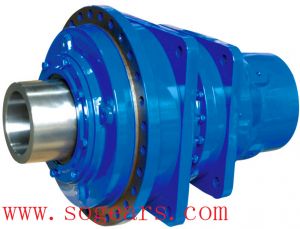Variable planetary gearboxes are common in almost all industries that require transmitting motion and torque from a motor to a driven load. They are often used in applications that demand variable speed, high power density, and high efficiency. Understanding the basic principle behind a variable planetary gearbox is crucial for selecting the right gearbox design and calculating the gear ratio.

A planetary gearbox consists of a sun gear, planet gears, and a ring gear. The planet gears are mounted on a carrier, which rotates around the sun gear as well as the ring gear. The relative motion between the input (sun gear) and output (ring gear) determines the gear ratio of the gearbox.
The gear ratio of a planetary gearbox can be calculated using simultaneous equations. The basic formula for calculating the gear ratio is as follows:
GR = (Sun Gear Teeth + Ring Gear Teeth) / Sun Gear Teeth
Where GR is the gear ratio, Sun Gear Teeth is the number of teeth on the sun gear, and Ring Gear Teeth is the number of teeth on the ring gear.
To calculate the gear ratio of a variable planetary gearbox, we need to consider the number of teeth on the planet gears, which can move around the carrier. The gear ratio changes as the planet gears rotate around the sun gear and the ring gear.
The equation for calculating the gear ratio of a variable planetary gearbox is as follows:
GR = (Sun Gear Teeth + Ring Gear Teeth + 2 x Planet Gear Teeth) / (Sun Gear Teeth + 2 x Planet Gear Teeth)
Where GR, Sun Gear Teeth, Ring Gear Teeth, and Planet Gear Teeth are as defined in the previous formula.
To calculate the gear ratio, we need to know the number of teeth on the sun gear, planet gears, and ring gear. For most gearboxes, these values are provided by the manufacturer. However, in some cases, the number of teeth may not be available, and we need to count them manually.
Once we have the gear ratio, we can use it to calculate the output speed of the gearbox. The formula for calculating output speed is as follows:
Output Speed = Input Speed / GR
Where Input Speed is the speed of the motor driving the gearbox.
In conclusion, calculating the gear ratio of a variable planetary gearbox is crucial for selecting the right gearbox design and calculating output speed. The simultaneous equations method is the most popular and reliable way to calculate the gear ratio. Understanding the principles behind a planetary gearbox is important for anyone who works in industries that rely on efficient and reliable transmission of motion and torque.